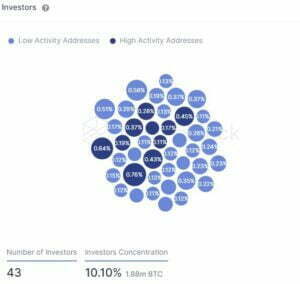When investing in Bitcoin it’s no surprise that the price of Bitcoin might be extremely volatile. Does the fact that more and more institutional investors invest in Bitcoin have consequences for the volatility of the price? The policy of MicroStrategy might answer this question.
Table of Contents
What is MicroStrategy?
MicroStrategy is a publicly held company. The shares of this company are noted at the NASDAQ exchange. As a result of this publicly trade-able ownership the company has to fulfill requirements as stated by the SEC (American Financial Authority). One of these requirements is that they have to fulfill compliance requirements. This means they have to trade and act in a responsible and ethical way.
Since MicroStrategy is the first company that is open about trading in Bitcoin as part of their asset management, there is relatively much public information about their trading strategies. With the public documents regarding MicroStrategy’s Bitcoin tradding activities we can provide you an insight in the way institutional investors are trading Bitcoin.
What’s the MicroStrategy Bitcoin trading policy?
One of the public documents is the MicroStrategy Bitcoin trading policy. In this policy the company formalizes corporate policies regarding trading in crypto on behalf of MicroStrategy.
To whom does this MicroStrategy Bitcoin trading policy apply?
One of the remarkable aspects of the policy is that the regulations are not only applicable to persons who are involved in trading on behalf of MicroStrategy (the so-called ‘Covered Persons’), but also to their immediate families and members of their households.
Who is in charge of maintaining the MicroStrategy Bitcoin trading policy?
According to the policy the company has appointed risk managers who are responsible for maintaining the policy and provide instructions and sanctions based upon the policy.
What does the policy actually say about trading in Bitcoin?
The core of the policy is the description of ‘Material Nonpublic information’. This is defined as follows:
“However, information should be regarded as Material Nonpublic Information concerning the Company’s holdings of or transactions
in BTC if:
• Such information has not been previously disclosed to the general public and is otherwise not available to the general public; and
• It is reasonably likely to be considered meaningful to an investor in making an investment decision regarding a transaction in BTC.
In the policy it is stated that the so-called ‘Covered Persons’ are not allowed to engage in in a transaction involving Bitcoin when the covered persons are in possession of such information. It is also prohibited tot trade in Bitcoin during a so-called non-trading period. This period will be determined and announced by the compliance officer. During this time it is also prohibited for Covered Persons to tip anyone outside the organisation or trade in Bitcoin in private.
What does this policy say about volatility of the Bitcoin prize?
Not all crypto trading policies of exchange-listed companies are public, but, since they all are subjected to the SEC-regulations we can safely assume that comparable policies are issued within other listed companies such as Tesla. Therefore we can expect that when trading activities are lowering considerably and investors are trading less than expected without finding an explanation in technical or fundamental analysis, there might be a non-trading period announced or there might be material nonpublic information. This means that a large change in the possession of (one or more) institutional investors can be expected.
It also means that based on general market information, the volatility will be more predictable than before, since retail investors are more or less ‘warned’ that some big transactions are coming. In our opinion this will lead to less shock effects in the market and a more gentle price movement. Furthermore it turns out that there is a decision process and the compliance officers have to announce a non-trading period to the covered persons. Therefore chances of an ‘overnight’ sale or purchase will decrease.
As a retail investor you can analyse the change in active investors and volatility with on-chain metrics. Here you see an example of current active investors, as available in the paid subscription data of our partner Intotheblock.

As we discussed yesterday, these objective criteria are a good basis to trade in Bitcoin in uncertain market circumstances.
You can download the full MicroStrategy’s Bitcoin trading policy here.

















